Hernias by themselves may or may not produce symptoms as they are asymptomatic and can cause slight to severe pain. A hernia does not get better with time, nor will it go away by itself (except very small congenital navel hernia).

Inguinal hernias are the most common types of male hernias, that are located in the lower abdomen and thigh going towards the scrotum, as a bulge in the groin. They are more common in men than women. Inguinal hernias usually occur when fatty tissue or part of a bowel, bulge out through a part of the lower abdominal wall known as inguinal canal.
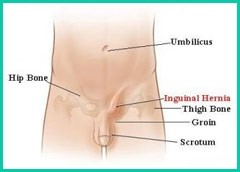
There are two types of inguinal hernias:
1. Direct inguinal hernia Occur as a result of weakness in the floor of the inguinal canal. They are usually bilateral and seen in elderly with chronic conditions which increase intra abdominal pressure such as chronic cough, chronic constipation etc.
2. Indirect inguinal hernia occur when the inguinal canal fails to close before birth. The hernia may appear in a male's scrotum or in the fold of skin at the opening of a female's vagina. This is the most common type of inguinal hernia. And it may occur at birth or later in life. Indirect hernias are more common in males.
However, it uses standard weight status categories that can help doctors to track weight status across populations and identify potential issues in individuals.
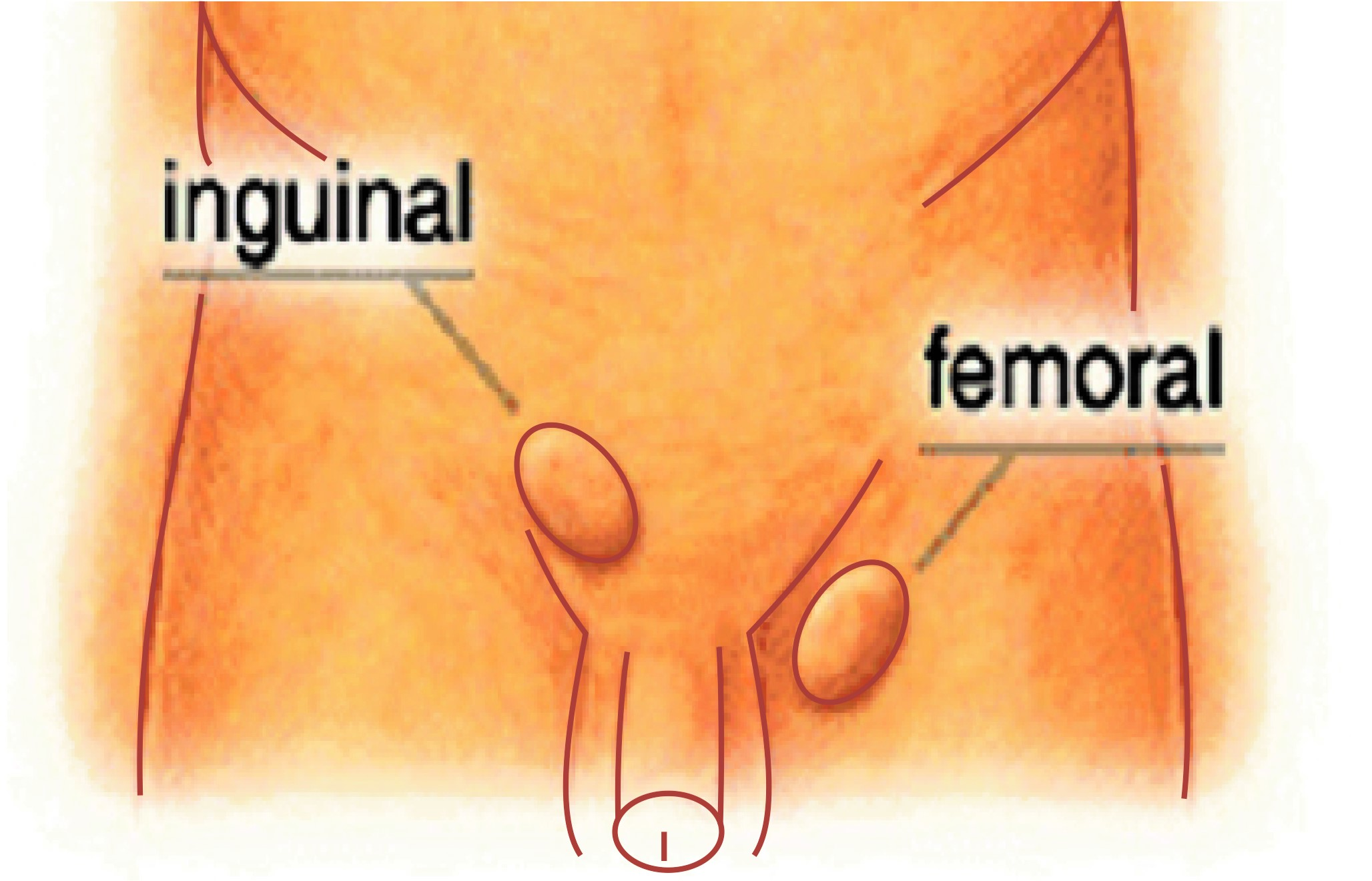
Femoral hernias also occur in the groin region just below the groin crease. They occur due to a weakness in the lower groin region usually as a result of pregnancy and child birth. They are therefore more common in women than men. They are more prone to complications and hence should be repaired once they are diagnosed.
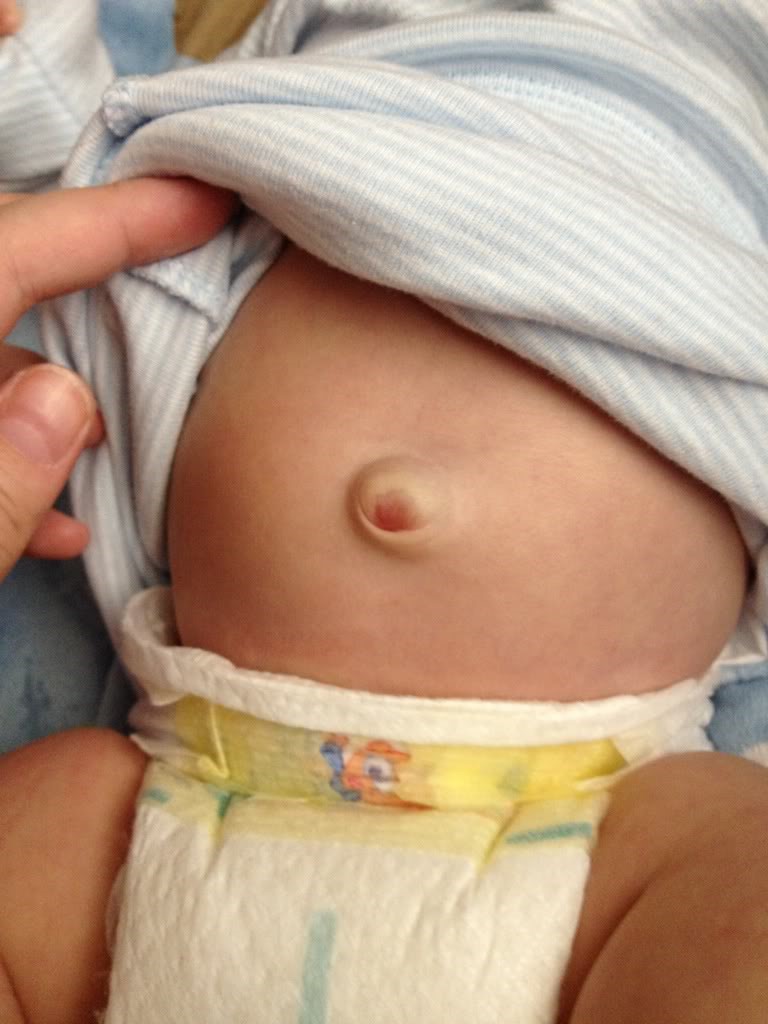
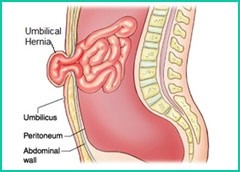
An umbilical hernia occurs when part of the intestine protrudes through the umbilical opening in the abdominal muscles. These hernias may occur in infants at or just after birth and may resolve by three or four years of age. However, the area of weakness can persist throughout life and can occur in men, women, and children at any time. In adults, umbilical hernias will not resolve and may progressively worsen over time. They are sometimes caused by abdominal pressure due to being overweight, excessive coughing, or pregnancy.
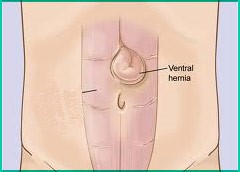
Ventral hernia is a hernia that surfaces on any part of the ventral surface of the human body. It results in a bulge or tear in the ventral surface that develops like a ballon-like sac.
There are three common types of ventral hernias.
a) An Incisional Hernia is a hernia that occurs through a previously made incision in the abdominal wall, i.e. the scar left from a previous surgical operation
b) A Periumbilical hernia occurs around the belly button.
c) An epigastric hernia occurs above the belly button.
Hernias may or may not be painful. In most cases, a hernia can be diagnosed through a physical examination of the abdomen.
Surgery is the only way to cure a hernia. A hernia will not go away on its own but will increase in size if left untreated.
An untreated hernia may also result in obstruction (intestinal blockage) and "strangulation," which requires immediate medical attention. Strangulation occurs when the blood supply to the herniated bowel is cut off or greatly reduced, causing the bowel tissue to die or rupture.
The surgical results with smaller hernias are more satisfying as compared to large hernias.
Two types of surgery are generally performed to treat hernia.
Laparoscopic surgery: A laparoscopic hernia surgery is a minimally invasive approach that involves the use of laparoscope that allows a laparoscopic surgeon to repair the weakened area through several small incisions that are about a half-centimetre in size, using a non absorbable mesh to cover the weak area.
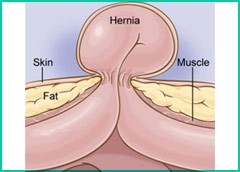
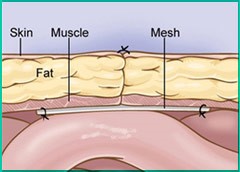
Conventional (Open): In open surgery, the skin and fat over a hernia are opened, the hernia is located, and a small mesh is placed under the hole in the muscle. The skin is then closed over the hernia repair site. Open surgery can be used for all types of hernias.
Laparoscopic surgery has the following advantages over open hernia repair:
A hernia is a weakness or tear in the abdominal muscles that allows fatty tissue or an organ such as the intestines to protrude through the weak area. Hernias can occur in many places in the body, most often in the groin. Sometimes, a weak spot in the abdominal wall can even be present at birth.
Men are more prone to inguinal hernias than women because of basic differences in anatomy. The area where hernias occur most often has a very different function in men than in women.
There is no guaranteed way to prevent getting a hernia or to prevent recurrence of a hernia.
Surgery is the only way to cure a hernia. A hernia will not go away on its own. Now days, many types of surgical hernia repairs are available.
Infection and/or bleeding are possible after surgery. The risk of complications increases if the patient smokes, takes drugs, is a heavy drinker, is very young or very old, or has other medical conditions.
Endoscopic surgery causes much less pain and patients are mobile within hours after surgery. They are also allowed to resume all activities much earlier and can go back to work within 5-7 days. Another advantage is that both sides can be operated in the same sitting without any extra pain or stay. The cosmetic results are excellent.
Generally, you can be discharged on the same day or no the next day of the surgery.
In general, plan to take about one week off from work.
Mostly the procedure is covered under most medical insurance plans. Please confirm in your policy documents.